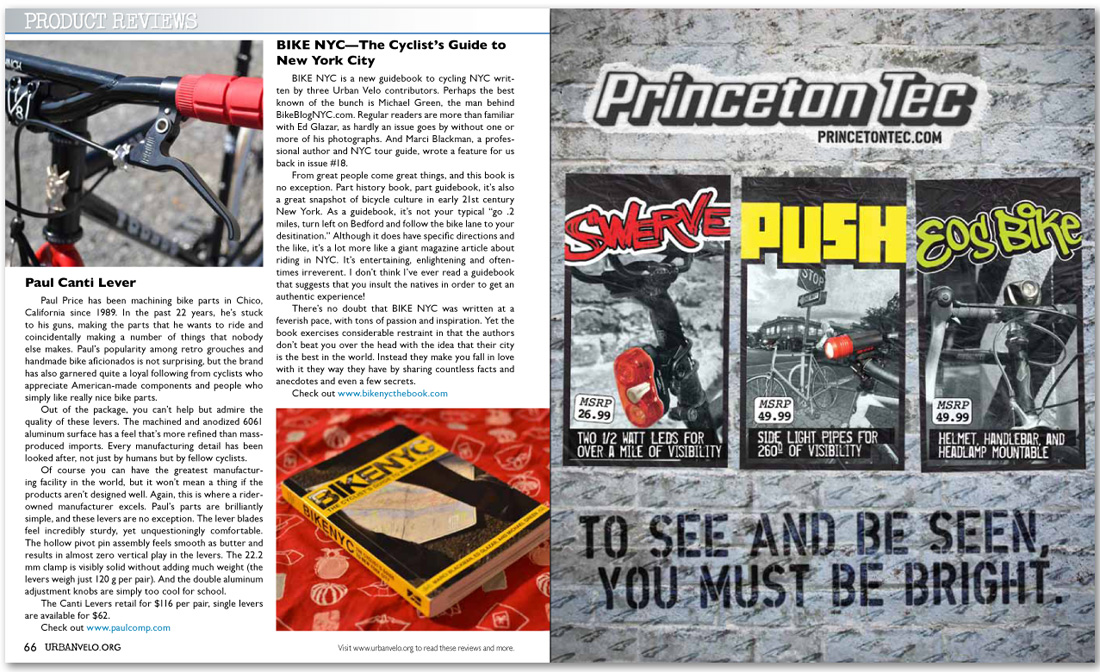


Paul Canti Lever
Paul Price has been machining bike parts in Chico, California since 1989. In the past 22 years, he’s stuck to his guns, making the parts that he wants to ride and coincidentally making a number of things that nobody else makes. Paul’s popularity among retro grouches and handmade bike aficionados is not surprising, but the brand has also garnered quite a loyal following from cyclists who appreciate American-made components and people who simply like really nice bike parts.
Out of the package, you can’t help but admire the quality of these levers. The machined and anodized 6061 aluminum surface has a feel that’s more refined than mass-produced imports. Every manufacturing detail has been looked after, not just by humans but by fellow cyclists.
Of course you can have the greatest manufacturing facility in the world, but it won’t mean a thing if the products aren’t designed well. Again, this is where a rider-owned manufacturer excels. Paul’s parts are brilliantly simple, and these levers are no exception. The lever blades feel incredibly sturdy, yet unquestioningly comfortable. The hollow pivot pin assembly feels smooth as butter and results in almost zero vertical play in the levers. The 22.2 mm clamp is visibly solid without adding much weight (the levers weigh just 120 g per pair). And the double aluminum adjustment knobs are simply too cool for school.
The Canti Levers retail for $116 per pair, single levers are available for $62.
Check out www.paulcomp.com
BIKE NYC—The Cyclist’s Guide to New York City
BIKE NYC is a new guidebook to cycling NYC written by three Urban Velo contributors. Perhaps the best known of the bunch is Michael Green, the man behind BikeBlogNYC.com. Regular readers are more than familiar with Ed Glazar, as hardly an issue goes by without one or more of his photographs. And Marci Blackman, a professional author and NYC tour guide, wrote a feature for us back in issue #18.
From great people come great things, and this book is no exception. Part history book, part guidebook, it’s also a great snapshot of bicycle culture in early 21st century New York. As a guidebook, it’s not your typical “go .2 miles, turn left on Bedford and follow the bike lane to your desitination.” Although it does have specific directions and the like, it’s a lot more like a giant magazine article about riding in NYC. It’s entertaining, enlightening and oftentimes irreverent. I don’t think I’ve ever read a guidebook that suggests that you insult the natives in order to get an authentic experience!
There’s no doubt that BIKE NYC was written at a feverish pace, with tons of passion and inspiration. Yet the book exercises considerable restraint in that the authors don’t beat you over the head with the idea that their city is the best in the world. Instead they make you fall in love with it they way they have by sharing countless facts and anecdotes and even a few secrets.
Check out www.bikenycthebook.com